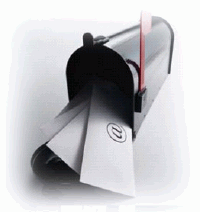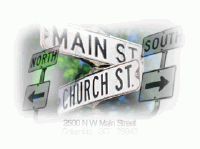It brought the good for many reasons - namely it enhanced the way people communicate among themselves by erasing traditional barriers and allowing for the free flow of information across national borders. Thanks to the Internet goods and services are exchanged at the speed of light, doctors can practice telemedicine, students can do research and executives can stay current with their education.That's good, even excellent!
The bad part is that the Internet has become a source of "bad" information from hate speech to recipes on how to build a dirty bomb.I don't want to dwell on these bad aspects since they have been discussed in many circles.
I would like to concentrate a little more on the ugly face of the Internet and, as an introduction, I will use a recent experience.
 Having
moved from Massachusetts to Colorado during the holidays, I was looking
for a ring for my wife and, naturally, the very first thing I did was to
surf the Web to find a nearby jeweler. To my dismay, although I could
find a plethora of jewelers on line, the ones which caught my attention
did not list any physical address! After a few unsuccessful attempts to
find their addresses, I gave up and took my car to the nearest mall.
An hour later I had what I wanted.
Having
moved from Massachusetts to Colorado during the holidays, I was looking
for a ring for my wife and, naturally, the very first thing I did was to
surf the Web to find a nearby jeweler. To my dismay, although I could
find a plethora of jewelers on line, the ones which caught my attention
did not list any physical address! After a few unsuccessful attempts to
find their addresses, I gave up and took my car to the nearest mall.
An hour later I had what I wanted.
The lesson here? Don't believe that addresses are things of the past.
In its zeal to create a "new economy", the Internet (at least some sites
on the Internet) has forgotten the value of an address. People have
an address, and even virtual businesses need an address to be incorporated
and operate.

Marketers all know too well the value of an address when they get back
mail stamped by the Post Office as "RETURN TO SENDER", or "ADDRESS UNKNOWN".
Every piece of returned mail should be seen as wasted production and postage
costs and should be avoided at all cost.
Health care organizations too are well aware of the cost of bad addresses. Bill Davenhall, Health Solutions Manager at Environmental Systems Research Institute, Inc.(ESRI) came up with a staggering figure.
"Every day more than one million incorrect addresses are entered into the nation's health data system," Davenhall notes. "Of the 4.5 billion claims mailed each year, 11 percent of them contain invalid addresses. Considering that the labor, postage and production costs associated with a mail piece average $6.22 per piece, bad address data on health care claims costs the industry over $3 billion annually."
Addresses are one of the most valuable assets we deal with - be it on an individual level (don't we hate to lose our friends' addresses?) or business level.
The questions then are:
- What do we do to obtain and work with clean addresses?
- Once they are cleansed, what can we do with those addresses?
- Is address hygiene a one time feat or is it a journey?

Thanks to the United States Postal Service's well-defined address standards, early geocoders were able to "understand" that structure and with parsing and address standardization achieve a relatively decent "hit" rate. Modern geocoders use additional processing and data conflation to enhance the percentage of correct geocodes and minimize "false positives," or an incorrectly matched address.
Address standardization and geocoding both require a reference database.
In the case of address standardization, the database is used for comparison
purposes.When it comes to geocoding, a spatial street network file is
used to determine the correct geographic coordinate for an address.For
instance, by combining these two types of data sources using proprietary
processing logic, a wide range of technologies can create a unique, more
complete database.In the new database, each address has both United States
Postal Service (USPS) and geographic information associated with it.

How does the conflation of postal and geographic data help? Assume
that you want to standardize this address: "100 S Main St".Let us further
assume that the only street segment in the USPS database was "100 Main
St." Most matching engines would drop the pre-directional for a high quality
match, thus creating a "false positive" or an incorrectly matched address.
Using a conflation process prevents this problem from happening by building
a better matching database.
Products are available that can return coordinates (latitude/longitude)
and Census block group information.Coordinate information is most commonly
used with spatial types of business problems.For example, "How far is
my customers' address from a particular store?" Block group codes allow
for further geodemographic enhancement.This data is used by direct marketers
to answer question such as "What is the average household income on the
northeast side of town?"

The ability to return latitude and longitude opens the door to a variety
of spatial analyses based on maps or not. For example, from three
data sets such as precinct boundaries, polling place addresses and voters'
addresses, address verification technologies can perform a simple point-in-polygon
and automatically assign the correct polling place for any registered voter.
Without any map!
Most industries recognize nowadays the value of correctly geocoded addresses
and use geographic coordinates in their every day operations to assess
risk, comply with governmental regulations or just market goods and services.

The danger lies in the fact some organizations believe it is sufficient
to verify address information just once in a while.However, with nearly
40 million Americans changing residences each year, address data must be
updated on a regular basis if you are to maintain important relationships.
This figure doesn't even include the thousands of businesses that relocate.